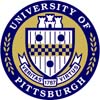Art & Science
Art and Ecology & Evolution from the Beginning.
Early in the study of Ecology & Evolution (E&E), natural philosophers used drawing, sculpting, and visual metaphors born of artistic practice. These practices were tools both to communicate findings and to develop their own understanding. Evolutionary biology grew up interacting with emerging Victorian Design. The two fields grappled to distill natural forms into common archetypes (the root of phylogenetics), understand variation on a theme (organization of diversity), and break down natural forms into modules (genetics and morphology) [1]. Haeckel’s Art Forms in Nature and Darwin’s first evolutionary tree sketch demonstrate the early power of artistic practices as thinking tools in E&E [2,3]. It remains clear that the two fields have a persistent and fruitful intellectual connection and emergent science maps in part to scientists who embrace art [4,5].
A Lab + An Artist = An Evolution of Practice.
Beginning in 2011 Stephen Tonsor and artist Natalie Settles began a collaboration based on the roles of time, space, and change in their work. Tonsor examines evolutionary diversification across shifting climate gradients in Arabidopsis thaliana. Settles’ wall drawings respond to site architecture and viewer traffic, eliciting time- and site-specific responses. Their collaboration itself is a “social sculpture”, inspired by the work of artist Joseph Beuys: When two distinct practices are put into contact, they alter the mental space of each practitioner and the trajectory of the fields—a form of shifting selection that Beuys based on evolutionary theory [7].
Settles’ studio practice is based in the lab, among 15 scientists. The group attends biology talks and art exhibitions, and trades books and conversation on topics in art and science. Meeting weekly, they discuss problems, triumphs, and the conceptual challenges of shaping new work and directions. They come to understand the context, questions, and methods of each other’s practices (See their talk to the National Academy of Science’s DASER forum).
The Project
Settles and Tonsor have designed an interactive, projected wallpaper in which the fitness (and therefore local adaption) of the wallpaper’s many distinct motifs is determined by viewer attention. The motifs’ genome has a logic drawn from genetic modularity, developmental cascades, and the elements of design. Viewers unwittingly participate as “blind watchmakers” in an evolutionary process to be revealed in a meta-exhibition. The genome for the motifs produces an abstraction of the evolutionary process that is a useful heuristic for the collaborators and a powerful explanatory tool. Throughout the process, each collaborator learns the language of the other, leading to a curiously mixed dialect. Frequent compromise and judicious tenacity keep the work and dialogue on track. Integrating these two related but distinct inquiries—artistic and scientific- can further the power of both ways of knowing.
This project is supported with funds from the The Heinz Endowments, The Pittsburgh Foundation, and through broader impacts funding to the lab from the National Science Foundation.
Watch Settles and Tonsor’s talk to the US National Academy of Science’s DC Area Art Science Rendezvous (DASER). Part 1 [9 min] – Part 2 [7 min] – Part 3 [7 min]
Watch Settles’s lecture in the University of Pittsburgh Ecology & Evolution Seminar Series.
Learn more about Settles and her work:
www.nataliesettles.com
1 Eisenman, Stephen F. (2008) Design in the Age of Darwin. Mary and Leigh Block Museum of Art, Northwestern University
2 Haeckel, Ernst (1904) Kunstformen Der Natur. Leipzig und Wein Bibliographiches Institut
3 Gauld, Nicola (2009) ‘What is Meant by this System?’ Charles Darwin and the Visual Re-ordering of Nature. pp. 119-140 In: Donald, Diana and Munro, Jane (Eds.) Endless Forms: Charles Darwin, Natural Science and the Visual Arts. Yale University Press
4 Consider the institutions at play: Leonardo, IMéRA, Symbiotica, the Studio for Creative Inquiry at Carnegie Mellon, the National Academy of Sciences’s DASER meetings, and Stanford’s LASER meetings, and destinations such as the Exploratorium, the CPNAS Galleries, Eyebeam, the Science Gallery (IRL), and the Center for PostNatural History, as well as the NSF/NEA 2011 collaborative discussions “Art as a Way of Knowing”.
5 Root-Bernstein et al. (2008) Arts Foster Scientific Success: Avocations of Nobel, National Academy, Royal Society, and Sigma Xi Members. Journal of Psychology of Science and Technology 1, 51-63
6 Beuys, Joseph and ed. Volker, Harlan (2004) Conversation with Joseph Beuys. pp. 9-74 In: Volker, Harlan (Ed.) What Is Art?: Conversation with Joseph Beuys. Clairview Books, West Sussex, UK.
